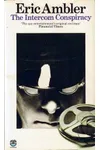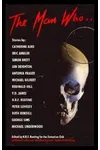Picture a British storyteller who turned the spy thriller into a gripping, realistic adventure—meet Eric Ambler! Born in 1908, Ambler swapped predictable heroes for ordinary folks caught in global intrigues, crafting tales that pulse with suspense and political savvy. His novels, like The Mask of Dimitrios, didn’t just entertain—they reshaped a genre.
Ambler’s knack for blending everyman characters with shadowy espionage made him a trailblazer. His stories, rooted in the turbulent pre-World War II era, feel as fresh today as they did decades ago. Let’s dive into the life and legacy of this thriller maestro!
The Making of Eric Ambler
Eric Ambler was born Eric Clifford Ambler on June 28, 1908, in London, England. Raised in a creative family—his parents were music hall performers—he developed a flair for storytelling early on. After studying engineering at university, Ambler ditched technical pursuits for advertising and writing. His first novel, The Dark Frontier (1936), was a bold debut, poking fun at the over-the-top spy tales of the time while laying the groundwork for his realistic style.
Ambler’s early career wasn’t all smooth sailing. He juggled writing with screenplays and wartime propaganda work, but his sharp wit and knack for tension kept his novels coming. His pre-war experiences in Europe, witnessing rising political unrest, fueled his authentic, grounded narratives.
Eric Ambler’s Unforgettable Stories
Ambler’s novels stand out for their relatable protagonists—think journalists, engineers, or teachers—who stumble into danger. Unlike suave super-spies, these amateurs navigate murky worlds of espionage with grit and guile. His writing, crisp and atmospheric, weaves political intrigue with moral ambiguity, making readers question the line between hero and villain.
Key works include The Mask of Dimitrios (1939), a chilling tale of a writer tracking a notorious criminal across Europe, revealing layers of deceit. Journey into Fear (1940) traps an engineer on a ship with assassins, showcasing Ambler’s knack for claustrophobic suspense. The Light of Day (1962), later adapted into the film Topkapi, blends humor and heist thrills as a small-time crook gets tangled in a jewel theft. Each novel reflects Ambler’s signature: ordinary people, extraordinary stakes, and a world where trust is scarce.
His style influenced giants like John le Carré and Len Deighton, who adopted his realistic lens. Ambler’s ability to mirror the geopolitical anxieties of his time—fascism, war, betrayal—made his thrillers timeless, earning him a devoted following.
Why Eric Ambler Matters
Eric Ambler didn’t just write thrillers; he reinvented them. By ditching cartoonish heroes for flawed, relatable characters, he brought depth to a genre often dismissed as pulp. His stories, steeped in the political upheavals of the 20th century, offered sharp commentary on power and morality, resonating with readers and writers alike.
Ambler’s influence echoes in modern spy fiction and films, from gritty novels to cinematic adaptations like Topkapi. His legacy as a pioneer of the realistic thriller endures, proving that great stories don’t need capes or gadgets—just a sharp mind and a dangerous world. He passed away in 1998, but his books remain must-reads for thriller fans.
About Eric Ambler
- Born: June 28, 1908, London, England
- Key Works: The Mask of Dimitrios, Journey into Fear, The Light of Day
- Notable Adaptation: Topkapi (1964 film, based on The Light of Day)
- Died: October 22, 1998
Snag The Mask of Dimitrios and dive into Eric Ambler’s world of espionage and suspense—you won’t look at thrillers the same way again!





























